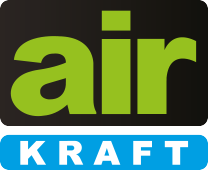Is compressed air expensive?
Compressed air can be relatively expensive compared to other energy sources, depending on how it is generated, distributed, and utilized. Here are a few factors that contribute to the cost of compressed air: Energy Consumption: Generating compressed air requires energy, typically from an air compressor. The energy efficiency of the compressor, along with the systems overall design and operation, can impact energy consumption and, consequently, cost. Leakage and Inefficiencies: Compressed air systems can experience air leaks and inefficiencies, which lead to wasted energy and increased costs. Regular maintenance and proper system design can help minimize these losses. Equipment and Maintenance: Air compressors and associated equipment require investment and regular maintenance to ensure optimal performance. The initial cost of equipment and ongoing maintenance expenses contribute to the overall cost of compressed air. Filtration and Treatment: Depending on the application, compressed air may require filtration, drying, or other treatment processes to meet quality standards. These additional components and processes can add to the overall cost. System Design and Efficiency: Well-designed compressed air systems that match the specific requirements of the application tend to be more efficient and cost-effective. System design considerations, such as pipe sizing, pressure regulation, and control systems, can influence energy usage and costs. Its important to assess your specific compressed air needs, consider energy-saving measures, perform regular maintenance, and optimize system design to manage and reduce costs. Consulting with experts in compressed air systems can provide valuable insights tailored to your specific situation. What is ISO8573-1:2010 ISO 8573-1 is an international standard that specifically addresses compressed air quality. It provides guidelines and specifications for measuring and classifying contaminants in compressed air systems. Heres a simplified explanation: ISO 8573-1 is like a quality standard for the air we use in compressed air systems. It helps us understand and control the levels of contaminants, such as particles, moisture, and oil, present in the compressed air. The standard divides contaminants into three main categories: particles, water, and oil. Each category has specific limits or levels that determine the quality of the compressed air. Lets break them down: Particles: These are tiny solid substances floating in the air. ISO 8573-1 measures the size and number of particles allowed in the compressed air. It defines classes like Class 1, Class 2, and so on, where Class 1 represents the cleanest air with the fewest particles. Water: Compressed air systems can have moisture or water vapor, which can cause problems in various applications. ISO 8573-1 sets limits for the amount of moisture allowed in the compressed air. It uses a dew point temperature scale to determine the level of dryness required. Oil: Some compressed air systems use lubricants or have oil contaminants. ISO 8573-1 specifies the maximum allowable oil concentration in the compressed air. It uses different classes to indicate the acceptable levels of oil content. By following ISO 8573-1, businesses can ensure that their compressed air systems meet specific quality standards. This helps prevent equipment damage, maintain product quality, and ensure the safety of processes that rely on clean compressed air. If you need more detailed information or specific guidelines related to your application, its recommended to consult the complete standard or seek expert advice from Air Kraft Ltd





